Conveying the core content of the Action Program to implement the Resolution of the 18th Hanoi Party Congress, term 2025-2030, Head of the Hanoi Party Committee's Organization Board Ha Minh Hai shared the motto of 8 steps of continuous improvement to innovate leadership, direction, and organization methods to implement the Congress Resolution and Action Program.
4 key points from Singapore's experience
Accordingly, after presenting the core contents of the Action Program to implement the Resolution of the 18th City Party Congress, Head of the City Party Committee's Organization Board Ha Minh Hai shared a number of lessons learned and applied them to Hanoi's practice to innovate leadership, direction and implementation methods.
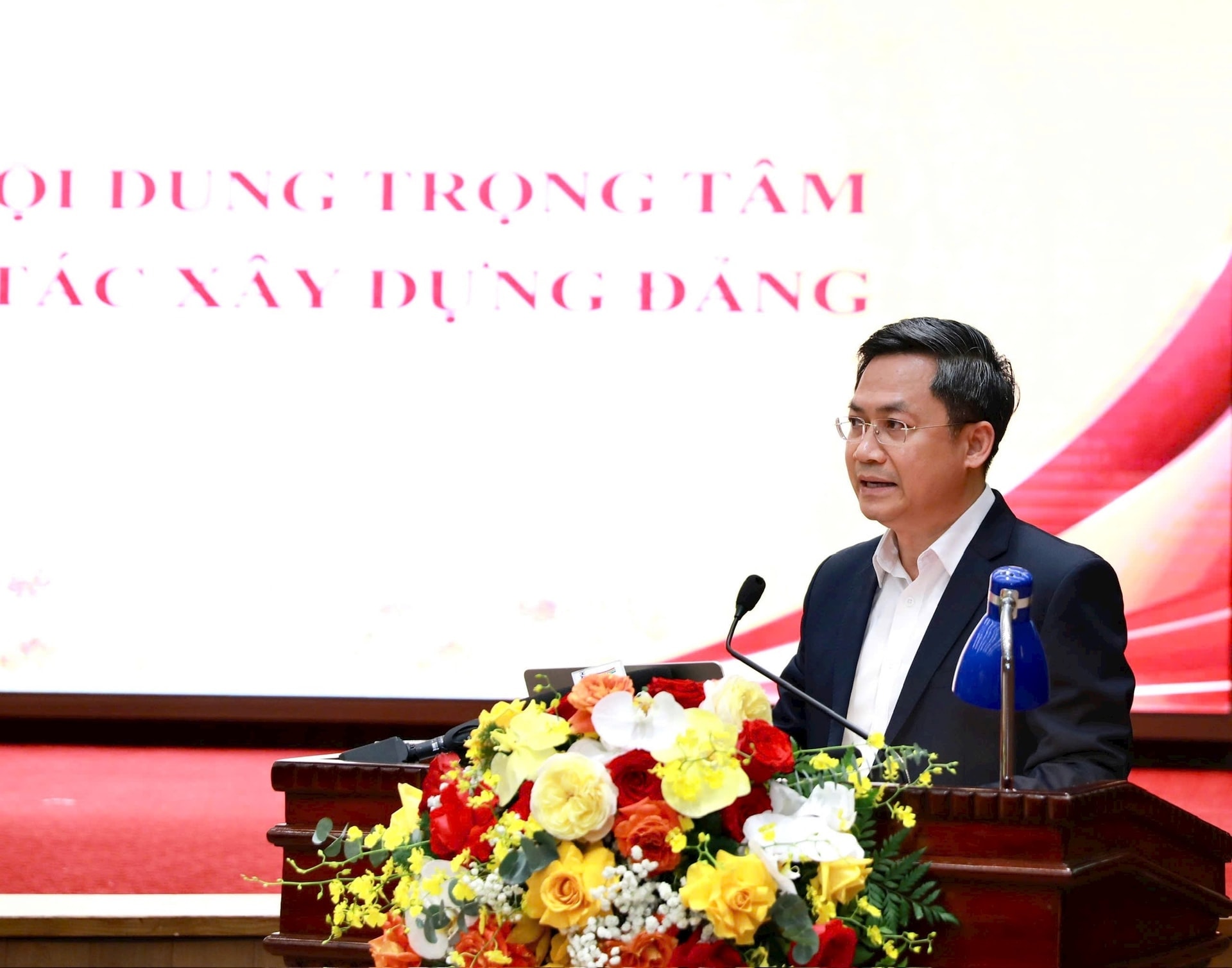
In which, Head of the Party Committee's Organization Board Ha Minh Hai focused on 4 lessons learned from Singapore's model of building a smart, serving government and 8 specific implementation steps for Hanoi.
Pointing out four key points that contributed to the success of the operating model in Singapore, the Head of the Hanoi Party Committee's Organization Committee said:
The first is the “One-stop, Multi-channel” model. In which, Singapore implements administrative demarcation, allowing people to carry out procedures at any location or center of the state. Recently, Hanoi has applied the establishment of the City Public Administration Service Center which has implemented demarcation.
The second is “Unified Data Infrastructure and the principle of “Tell Once, Use Many”. Singapore has realized this principle through a unified identification, location, digital twin and living data infrastructure. This helps to avoid the need for people or groups of people to enter the same content multiple times.
Third is centralized measurement and continuous improvement. The Singapore government uses a measurement system that combines direct listening to the opinions of citizens and businesses (through a parallel, bottom-up unit). Problems are reported immediately to the highest level for correction, ensuring "continuous improvement." Citizens can sign digitally to rate their satisfaction/dissatisfaction, and the results are published in real time.
The fourth is Digital Inclusion, with specific content of setting up direct service centers with priority counters for the disadvantaged, ensuring that all subjects are cared for and guided to participate in the digitalization process.
8-step continuous improvement process
From the above experiences, comrade Ha Minh Hai said, Hanoi has drawn out 5 principles and implementation guidelines, which are concretized into an 8-step process according to the continuous improvement cycle (OKR). Specifically as follows:
The first is “Setting Goals (O)”: Set clear, strong, measurable and time-bound goals from the Resolution.
The second is “Key Results (KR) Design”: Each objective has a maximum of 5 KRs that are quantified, focused, key, concentrated, and converted according to KPIs and output standards.
Third is "Target decomposition": Ensuring vertical alignment from city level down to departments, branches, units, communes and wards, creating synchronization and unity.
The fourth is “Role assignment in work management (RACI)”: Assigning and dividing tasks according to “6 clear” (clear people, clear work, clear authority, clear resources, clear results, clear responsibilities), ensuring adequate human resources, funding, data, tools and authority.
The fifth is “Standardize processes and data”: Issue digital processes, data dictionaries, and identifiers for each organization and individual, and establish automatic data processing procedures. Specify inputs and outputs for each stage.
Sixth is “Monitoring Operation”: Update real-time data to Dashboard (DAS) and give early warning when there are signs of exceeding the threshold (yellow, red).
Saturday is “Review and Adjust”: Regular meetings on a weekly, monthly, and quarterly basis to coordinate, remove bottlenecks, and update OKRs based on practice (flexible and dynamic).
The eighth is Preliminary summary, final summary and replication: Automatic reporting, publicizing results, rewards, reminders and replication of good models.
“Currently, the city has almost implemented these 8 processes. We will complete it in a synchronous and unified way, connecting the mini IOCs (Intelligent Operation Centers) from bottom to top,” said comrade Ha Minh Hai.
Personal responsibility is the deciding factor
Regarding the command - operation - responsibility structure, Head of the City Party Committee's Organization Committee Ha Minh Hai said that there are three structures and a department called IOC to assist these three departments. The city, departments, branches and commune levels all establish Steering Committees/Executive Committees. In particular, the head (City Party Committee Secretary/Department Director) will be personally responsible to the Party Committee for the implementation results - a factor identified as extremely important, determining success.
For the commune level, the Party Secretary directed the establishment of a monitoring team to carry out responsibilities, update data and serve field inspections. The commune level must pay close attention to field inspections. The OKR, KPI and Data Department of the Party Committee Office is a part of the IOC that standards indicators, reports quality and provides automatic reports to serve leadership and management.
In addition, the city will focus on building four core index groups for measurement, including: Development results index group, Government service index group, Party work index group, and Internal affairs anti-corruption/public opinion communication index group. And each KPI has a formula, data source, green light, red light threshold, leading and coordinating unit, which means building coordination regulations in a synchronous system from the city down to the grassroots level.
According to the Head of the Hanoi Party Committee's Organization Committee, a weakness that is being focused on is the vertical and horizontal connectivity between systems. Hanoi will build a shared integrated data warehouse (focusing on land, businesses, health, education , etc.), standardize data and especially develop an automatic data processing process.
"The general spirit is to update once and use many times. Whoever is assigned to manage a department is responsible for entering and updating data," Comrade Ha Minh Hai affirmed, adding that the responsibility for updating data will be placed directly on the assigned staff.
At the same time, the city also identified the application of artificial intelligence (AI) in Hanoi as an important real-time interactive channel, connecting people with the government, helping to synthesize on-site reflections and handle hotspots, moving towards optimizing and intelligentizing the system in the 2028-2030 period.
According to the Head of the Party Committee's Organization Board, Hanoi is determined to implement this reform roadmap, identifying this as a very important step to innovate leadership and implementation methods, aiming to build a serving, effective and modern government.
Source: https://daibieunhandan.vn/ha-noi-trien-khai-phuong-cham-8-buoc-cai-tien-lien-tuc-10395548.html





![[Photo] Deep sea sand deposits, ancient wooden ship An Bang faces the risk of being buried again](https://vphoto.vietnam.vn/thumb/1200x675/vietnam/resource/IMAGE/2025/11/13/1763033175715_ndo_br_thuyen-1-jpg.webp)


![[Infographic] Deputy Secretary of the City Party Committee, Chairwoman of the Hanoi People's Council Phung Thi Hong Ha](https://vphoto.vietnam.vn/thumb/402x226/vietnam/resource/IMAGE/2025/11/13/1763038877681_img-2118-54020024704776382809356-82590448805670117934347.jpeg)

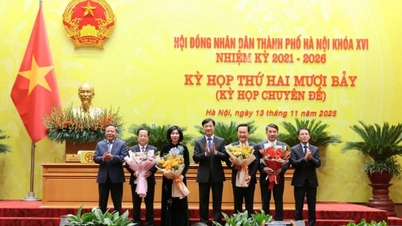























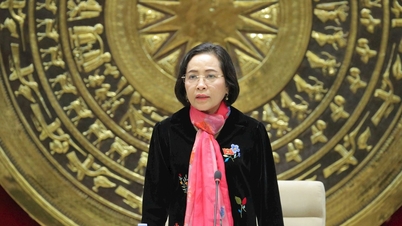






































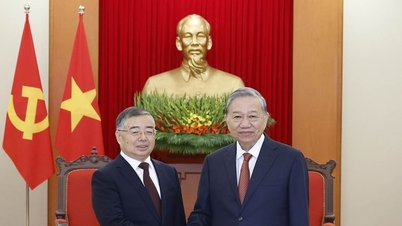
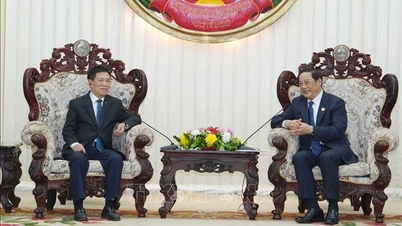







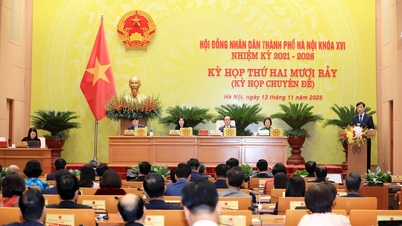



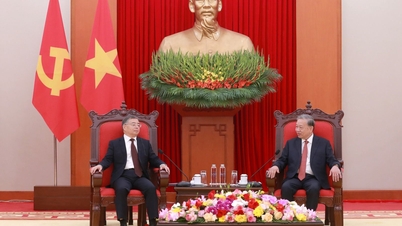


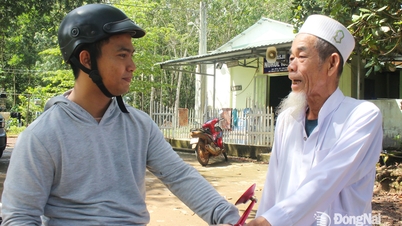










![Dong Nai OCOP transition: [Article 3] Linking tourism with OCOP product consumption](https://vphoto.vietnam.vn/thumb/402x226/vietnam/resource/IMAGE/2025/11/10/1762739199309_1324-2740-7_n-162543_981.jpeg)







Comment (0)